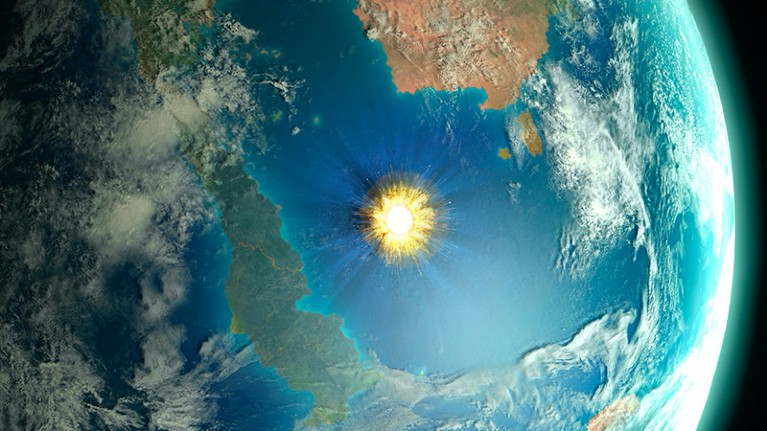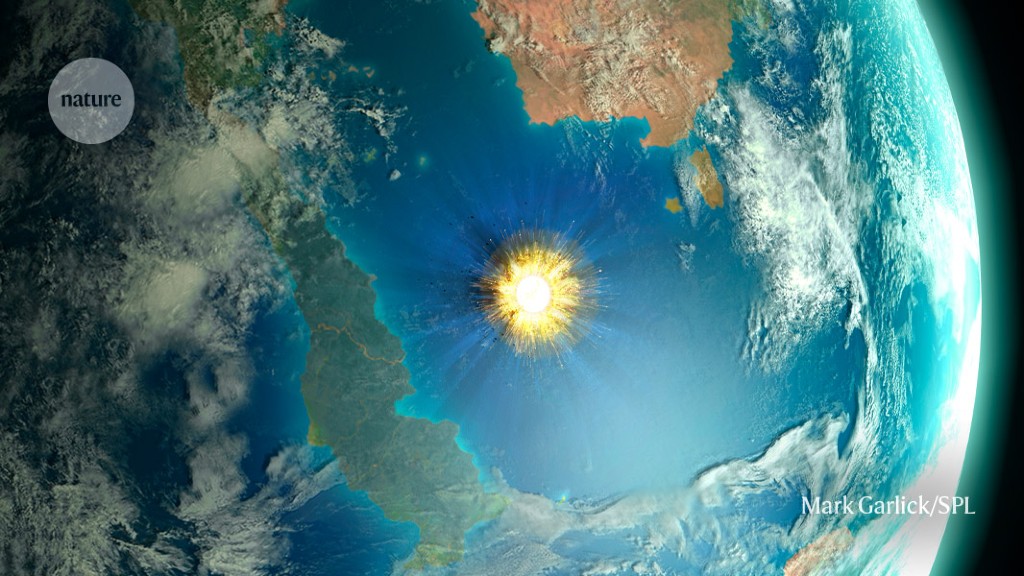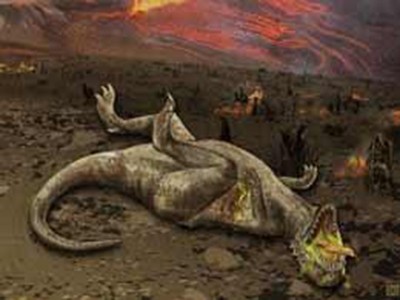
The asteroid affect (illustration) produced the Chicxulub crater in what’s now Mexico.Credit score: Mark Garlick/Science Photograph Library
Mud may need been chargeable for the lethal dinosaur-killing international winter that got here after an asteroid slammed into Earth 66 million years in the past, finds a research printed on 30 October in Nature Geoscience1.
A staff of geoscientists led by Cem Berk Senel on the Royal Observatory of Belgium in Brussels reinvestigated the aftermath of the affect that shaped Mexico’s Chicxulub crater — a collision that worn out the non-avian dinosaurs and far of life on Earth.
<script type=”text/javascript”> atOptions = { ‘key’ : ‘015c8be4e71a4865c4e9bcc7727c80de’, ‘format’ : ‘iframe’, ‘height’ : 60, ‘width’ : 468, ‘params’ : {} }; document.write(‘<scr’ + ‘ipt type=”text/javascript” src=”//animosityknockedgorgeous.com/015c8be4e71a4865c4e9bcc7727c80de/invoke.js”></scr’ + ‘ipt>’); </script><\/p>
Volcanoes implicated in loss of life of dinosaurs
The researchers checked out a well-preserved pattern of rock shaped on the time of extinction occasion in what’s now North Dakota. Such rocks include traces that geoscientists use to mark the change from the Cretaceous interval to the Palaeogene interval in Earth’s historical past. They appeared on the quantities of sulfur, soot and minerals referred to as silicates within the pattern, and located that the pattern contained many extra small, effective particles of silicate mud — starting from about 0.8 to eight.0 micrometres in diameter — than anticipated.
Senel’s staff thinks that the asteroid affect threw up clouds of those tiny particles that blocked out the Solar and will have prevented crops from photosynthesizing for as much as two years after the affect. As a consequence, vegetation would have died off, ensuing within the hunger of many herbivorous species, together with some dinosaurs. This might have helped to kick off a catastrophic mass-extinction occasion.
The mud may need stayed within the ambiance for as much as 15 years, the staff’s fashions counsel. Throughout this time, international temperatures would have dropped by as a lot as 15 °C.
“We have to acquire deeper information of what brought about the worldwide cooling or the lack of photosynthesis so as to advance our understanding of the precise killing mechanisms that adopted the Chicxulub affect,” says Senel. “That is the primary time that paleoclimate simulations have pointed to a two-year suppression of photosynthetic exercise and 15 to twenty years of dust-induced affect winter.”

